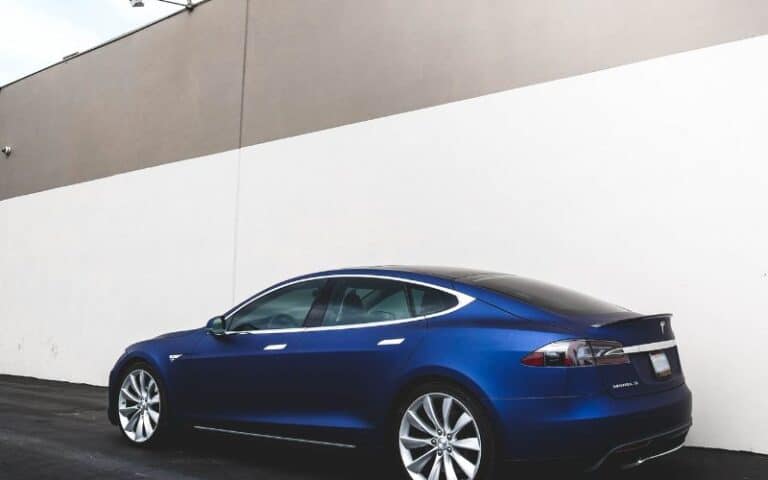Is Tesla Model 3 Eligible For Tax Credit? (Must Know This)
Why would other Tesla vehicles get to enjoy tax credits and not the proud owner of the awesome Model 3?
What factors determine whether your Tesla model gets to qualify for the federal tax credit or not?
Is it possible to buy Tesla Model 3 at a much lower price even if it doesn’t qualify for a tax credit?
These could be some of your worries, but here’s the thing;
Tesla Model 3 is eligible for tax credit, giving it an edge over other electric vehicles like the Hyundai Ioniq 6 and Polestar 2. Due to the eligibility of Model 3 for a tax subsidy, its purchase price reduces from about $42,000 to $30,000. To access tax credit for your Model 3, you need the recommended Annual Gross Income.
If you read this guide, you’ll discover whether your Model 3 qualifies for the federal tax credit.
You’ll also learn about the additional benefits that accompany tax subsidies and how to claim them. Now, please tag along!
Does the Tesla Model 3 Qualify for Tax Credit?

Until recently, Model 3 wasn’t on the list of cars that qualify for the tax credit, but now it is.
The Tesla Model 3, as one of the clean cars around now, qualifies for a federal tax credit of up to $7500.
This change in tax credit qualification for the Tesla model is a product of the massive Inflation Reduction Act in August 2022.
However, it’s worth knowing that not just Tesla Model 3 is eligible for tax credit; other Tesla brands are now eligible for task credit of $7500.
Here’s a table to show the new list of Tesla models and the tax credit they qualify for;
| Tesla Models | Tax Credit Before 2023 | Tax Credit After 2023 |
|---|---|---|
| Tesla Model 3 | $7500 | $3750 |
| Tesla Model Y | $7500 | $4000 |
The All-Electric, Fuel Cell, and Plug-in hybrid cars are now eligible for a tax credit of about $7500.
Essentially, for you to claim the tax credit, here are some of the requirements you’ll have to meet up with;
- Vehicle’s MSRP
- Vehicle’s battery component
- Critical mineral sourcing
- Annual Gross Income (AGI)
- Final assembly location
An important factor determining the tax credit a Tesla vehicle can get is its sticker price.
This initiative of allowing tax credits for Tesla Model 3 is to allow the easy availability and purchase of Tesla.
Hence, with the advent of the Tesla Model 3 qualifying for the tax credit, there’ll be a spur in the rate at which Tesla gets sold out.
Also, if you had your Tesla Model 3 before 2023, you’ll get the federal credit tax of $7500 or less if later than 2023.
Tesla cars got in 2023 or after can only stand the chance to qualify for a federal tax credit of about $4000.
Moving on, some Tesla Model 3 brands could get tax credits, but that had a limit of about $3750. The new upgrade allows this vehicle to get a tax credit of up to $7500.
If you visit the Tesla website, you’ll be glad to find these new changes in terms of the qualification of its models for the tax credit.
22 Tesla models apart from Tesla Model 3 cars are eligible for the federal tax credit.
How Do I Get the Tax Credit for My Tesla Model 3?
To get the tax credit for your Tesla Model 3 vehicle, you’ll need to meet the requirements, and these include;
- Your Tesla Model 3 vehicle has to be something you got for personal use and not for resale purposes.
- The federal tax credit only works for cars you use in the United States and not elsewhere.
- The limit of your massive Adjusted/ Annual Gross Income should be within acceptance.
The Adjusted Gross Income limit ranges between $150,000 to $300,000 depending on the category of persons you fall into.
For example, the Annual Gross Income of married couples filing together is $300,000, while that of household heads is $225,000.
Likewise, the Annual Gross Income of other filers apart from married couples and household heads is $150,000.
Also, to claim delivery of your Tesla Model 3 tax credit, you’ll have to use the Annual Gross Income of the year you first got your Tesla.
Alternatively, you can use the Annual Gross Income of the year before you got your car; the most important thing is to use a lesser year when comparing both years.
If you find out the Annual Gross Income is below the threshold of the years you pick out, you can claim your tax credit.
If your car qualifies for tax credit, claiming your tax credit requires a bit of protocol to go through.
You’ll need to fill out form 8936; this form gives you full access to claiming the tax credit for your Model 3.
Apart from using this form to claim the tax credit, you can also find out the exact tax credit your car is eligible for.
How Much Is Tesla Model 3 After Federal Tax Credit?
The qualification of the Tesla Model 3 for the federal tax credit is now making the electric vehicle quite affordable in the market.
The price of the Model 3 from what it used to be has now come down to as low as $30,000, all because of the federal tax credit.
Previously, buying a Model 3 without tax incentives could cost you nothing less than $42,000, so it’s a win now.
It is unclear why Tesla decided to cut down the prices of most of its electric vehicles (EVs) and qualify them for tax credits.
However, the cuts and bumps in Model 3 prices are all a way of keeping up with the market’s competition.
Tesla knows that if it cuts down the prices of all its EVs, including the Model 3, it’ll record higher rates of purchases than before.
Also, introducing model 3 qualification of the federal tax credit will help you get model 3 at a cheaper rate; that becomes an added advantage if you could not afford Tesla previously.
Although the Tesla Model 3 qualifies for the tax credit, which makes it more affordable now, you’ll only get access if you meet some basic requirements.
One requirement is that your Annual Gross Income should be less than $300,000 for couple filers or $225,000 for household heads.
Previously, if you own any of the cheapest versions of Model 3, you won’t get full access to the tax credit of $7500 but just half of it.
That happens because the batteries of the cheapest versions of Model 3 come directly from China, which disqualifies it from having the total tax credit.
However, Tesla has made new adjustments to cover that; when you go to Tesla’s website, you’ll have access to a total of $7500 even while using the cheapest Model 3.
But, if you cannot benefit from the advantages of the tax credit, you can get a price reduction through leasing.
Leasing allows you to buy Tesla Model 3 at an affordable price without the tax incentive.
Which Tesla Also Qualifies for Federal Tax Credit?
All Tesla Models 3 and Y are eligible for the federal tax credit; with any car in the Model 3 and Y series, you’ll get the full tax credit of $7500.
Although these cars weren’t initially part of the fortunate EVs that qualify for the federal tax credit, recent adjustments have included them.
Previously while some series of EVs were getting the full tax subsidy, others were getting just about half of the total possible subsidy.
Now, all the Model 3 and Y vehicles are eligible for the full federal tax subsidy of $7500 instead of $3750.
This initiative helps bring down the market price of most cars in the Model 3 and Y categories.
Without the tax subsidy, you’ll be buying a Tesla Model 3 or Y for nothing short of $42,000 and more. Now, it’s more than $10,000 short of that, all thanks to the tax credit.
Besides the reduction in prices, Tesla Model 3 has a 272-mile range, making it budget-friendly.
That makes it similar to more budget-friendly cars like the Honda Accord and Toyota Camry, giving it an edge over other EVs.
Unlike Model 3 and Y, electric competitors like the Polestar 2 and Hyundai Ioniq 6 don’t benefit from tax subsidies.
That’s because they possess battery material sourcing that doesn’t meet the requirements for the federal subsidy.
Also, their vehicle manufacturing location doesn’t support utilizing the federal tax credit.
Furthermore, some parts of the United States of America, like California, give additional tax credits.
In such instances, you’ll buy your Tesla Model 3 at an even lower price than what the normal tax subsidy offers.






